-
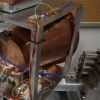 +9 +1
+9 +1A German Team Is Now Trying to Make the ‘Impossible’ EmDrive Engine
German physicists launched the SpaceDrive project to explore possible sources of error in EmDrive experiments. Their first experiment identified a possible source of false positives in past successful EmDrive tests. Since the beginning of the space race over half-a-century ago, humans have walked on the moon and remotely explored the surface of two other planets in our solar system with robots. But so far, only a single spacecraft has made it to interstellar space: Voyager 1...
-
 +18 +1
+18 +1NASA’s EM-drive still a WTF-thruster
New paper generates more noise than experimental thrust. By Chris Lee.
-
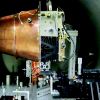 +17 +1
+17 +1NASA Team Claims ‘Impossible’ Space Engine Works—Get the Facts
After years of speculation, a maverick research team at NASA’s Johnson Space Center has reached a milestone that many experts thought was impossible. This week, the team formally published their experimental evidence for an electromagnetic propulsion system that could power a spacecraft through the void—without using any kind of propellant.
-
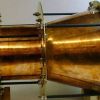 +2 +1
+2 +1Nasa's 'impossible' EmDrive could work, study says
The so-called 'impossible' hypothetical EmDrive thruster, that was designed to propel craft through space using electromagnetic waves, is scientifically possible, physicists have said. Since the theory behind the EmDrive was released in 2006, the potential thruster has proved controversial. Until now, a lack of independent verification left the device open to criticism, but a new peer-reviewed paper, looking at the 'impossible' drive, is set to change this by giving the propulsion method more credibility than it has had before.
-
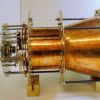 +14 +1
+14 +1The Fact and Fiction of the NASA EmDrive Paper Leak
Mach effect pioneer James Woodward breaks down the significance of a leaked paper detailing the successful test run of NASA’s ‘impossible engine.’ By Daniel Oberhaus.
-
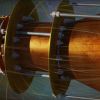 +45 +1
+45 +1Impossible Spaceship Engine Actually Works, NASA Report Reveals
When a scientist announced last decade that he’d built a new form of spacecraft propulsion called the EmDrive that didn’t require conventional fuel, it sounded too good to be true. But the great thing about science is that you don’t have to take someone’s findings at their word; you can test it for yourself. NASA did just that—and while the space agency hasn’t officially released its findings yet, a leaked copy of NASA’s report reveals the EmDrive seems to work as advertised.
-
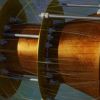 +9 +1
+9 +1Leaked NASA Paper Shows the 'Impossible' EM Drive Really Does Work
The results of NASA's tests on the 'impossible' EM Drive have been leaked , and they reveal that the controversial propulsion system really does work, and is capable of generating impressive thrust in a vacuum, even after error measurements have...
-
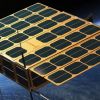 +24 +1
+24 +1The 'impossible' EM Drive is about to be tested in space
An actual EM Drive is about to be launched into space for the first time, so scientists can finally figure out - once and for all - if it really is possible for a rocket engine to generate thrust without any kind of exhaust or propellant. Built by American inventor and chemical engineer, Guido Fetta, the EM Drive is as controversial as it gets, because while certain experiments have suggested that such an engine could work, it also goes against one of the most fundamental laws of physics we have.
-
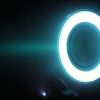 +15 +1
+15 +1New Published Results on the 'Impossible' EmDrive Propulsion Expected Soon
New results on the controversial, “impossible” EmDrive propulsion system could be soon published in a prestigious peer-reviewed scientific journal, according to credible rumors. “It is my understanding that Eaglework’s new paper has been today accepted for publication in a peer-review journal, where it will be published,” said high-reputation poster José Rodal, Ph.D, on the NasaSpaceFlight forum, which is often the primary source of updates for all things EmDrive. “Congratulations to the Eagleworks team!” The poster added that the sources of the leak are not employed by NASA.
-
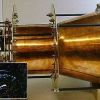 +29 +1
+29 +1Nasa lab to publish 'impossible' fuel free EmDrive paper
The so-called EmDrive creates thrust by bouncing microwaves around in an enclosed chamber, and uses only solar power - and now a Nasa lab is set to reveal its findings on the technology.
-
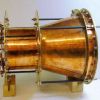 +24 +1
+24 +1The EmDrive Finally Will Undergo Peer Review
The gist of EmDrive is that it's an engine that appears to gain intense amounts of propulsion via ambient microwave energy. Supposedly, this could make for spaceships that can gain speed without propellant in the vacuum of space. If it's true, then this technology would be a revolution in space—a way to drastically cut down on the mass of spaceships and keep them going by producing continuous thrust, bringing long voyages closer to reality.
-
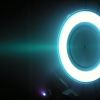 +19 +1
+19 +1NASA confirms that the ‘impossible’ EmDrive thruster really works, after new tests
Engineer Roger Shawyer’s controversial EmDrive thruster jets back into relevancy this week, as a team of researchers at NASA’s Eagleworks Laboratories recently completed yet another round of testing on the seemingly impossible tech. Though no official peer-reviewed lab paper has been published yet, and NASA institutes strict press release restrictions on the Eagleworks lab these days, engineer Paul March took to the NASA Spaceflight forum to explain the group’s findings.
-
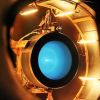 +44 +1
+44 +1An Australian student has developed a “new kind of ion space drive” that outperforms NASA’s fuel efficiency record
An Australian university student has reportedly developed a new kind of ion space drive that absolutely obliterates NASA's current fuel efficiency record.Ion drives are propulsion systems that basically work by throwing particles backwards really, really fast in order to propel a spacecraft forward.
-
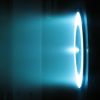 +58 +1
+58 +1Scientists Confirm 'Impossible' EM Drive Propulsion
The EM Drive (Electro Magnetic Drive) uses electromagnetic microwave cavities to directly convert electrical energy to thrust without the need to expel any propellant. First proposed by Satellite Propulsion Research, a research company based in the UK founded by aerospace engineer Roger Shawyer, the EM Drive concept was predictably scorned by much of the mainstream research community for allegedly violating the laws of physics, including the conservation of momentum.
Submit a link
Start a discussion




















